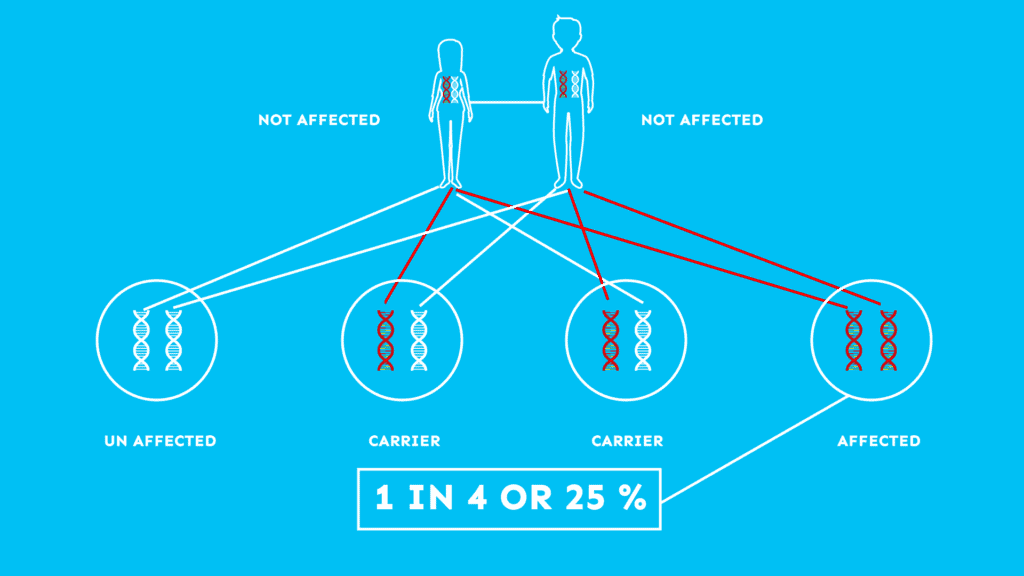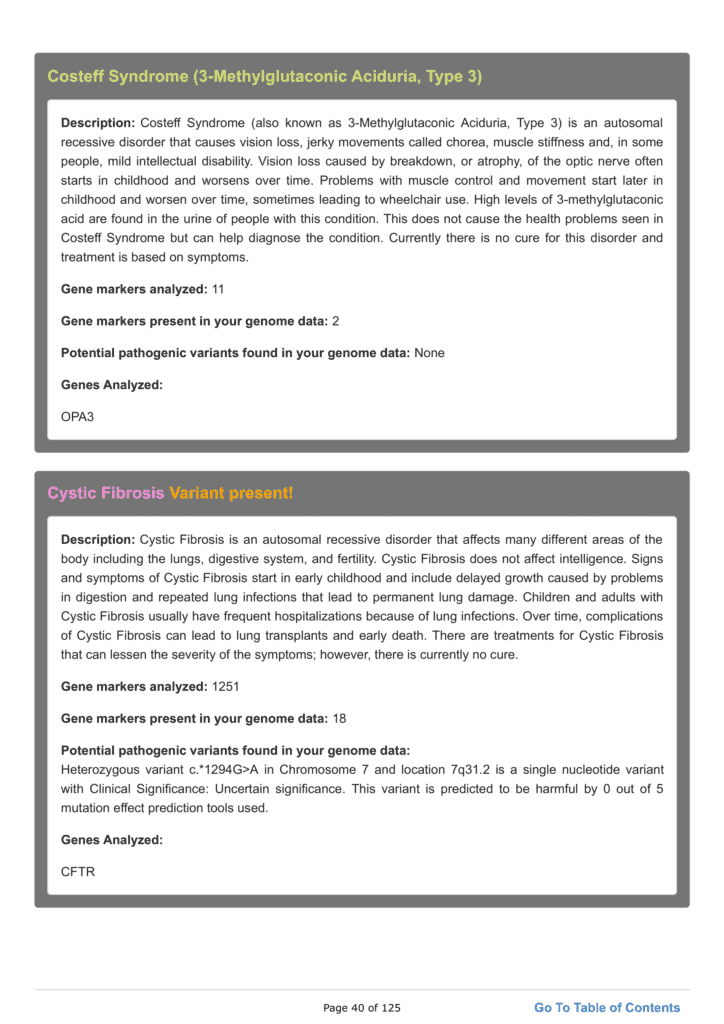Xcode Life’s Carrier Status report profiles genes that are associated with several health conditions that can be passed on to your children.
Who Is A Genetic Carrier?
A genetic carrier is someone who carries and potentially passes on a faulty gene associated with a disease but may or may not display the disease symptoms themselves. If a genetic carrier has children with another carrier for the same condition, then each child has a 25% chance of being affected by the condition.
A genetic carrier screening test helps couples determine the risk of passing down genetic conditions to their child, either prior to conception (preferred) or in early pregnancy. Carrier screening is becoming an essential part of pregnancy planning, and allows you to make informed decisions about your reproductive options and prenatal care.
Carrier Screening Report
The Carrier Status Report analyzes your genetic risk of being a carrier for over 360 inherited conditions. In this report, pathogenic and likely pathogenic variants are reported.
The conditions are marked in green if you do not have any pathogenic variants for them. Red indicates the presence of a pathogenic variant associated with that condition.
Each condition also comes with the following details.
- The number of gene markers we analyze.
- The number of gene markers present in your DNA raw data.
- The potential pathogenic markers present in your data for that condition.
- The genes analyzed.
The potential pathogenic variant may be none in most cases. This is because these are rare variants, present in very few people. Additionally, ancestry tests cover only a small portion of your genome, and they may not reflect all the pathogenic variants present.
What are the traits covered in this report?
The report analyzes 360+ inherited conditions, including Alpha-1-antitrypsin deficiency, Beta Thalassemia, Bloom syndrome, Cystic fibrosis, Duchenne muscular dystrophy, Familial hypercholesterolemia (LDLR related), Glycogen storage disease type 7, Homocystinuria due to MTHFR deficiency, Phenylketonuria, Retinitis pigmentosa, Severe combined immunodeficiency, and Wilson disease. For a comprehensive list of the traits covered, click here.






